Articles
Sample Articles from Bob Wallace.
Read More about Bob.
More Enterprises Opt for Single-Vendor SASE Solutions
- Details
- Published on 14 August 2023
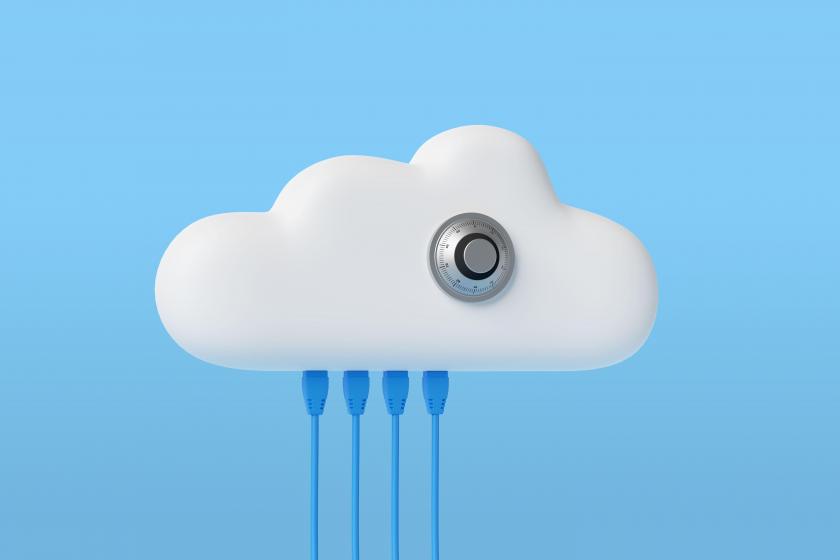
(Credit: Juan Roballo / Alamy Stock Photo)
A Dell’Oro Group forecast report finds great and growing interest in single-vendor SASE over multi-vendor solutions.
Single-vendor SASE solutions are expected to grow twice as fast as multi-vendor approaches, according to a recent forecast report by Dell’Oro Group, a global infrastructure research firm.
The report results signify that more enterprises are opting for one company – as opposed to many - to deliver and support advanced security systems. Dell'Oro names 11 vendors capable of delivering single-vendor SASE solutions.
Secure Access Service Edge (SASE) is an enterprise networking technology category introduced by Gartner in 2019. It converges the functions of network and security solutions into a unified, global cloud-native service. SASE allows an architectural transformation of enterprise networking and security. That, in turn, lets IT provide an agile and adaptable service to its users. It combines WAN edge services with Secure Service Edge tools and services to securely connect remote users and sites to data, cloud services, and the enterprise.
“Since we started tracking the SASE market in 2019, multi-vendor solutions have represented most of the market compared to single-vendor. However, in 2023 we anticipate that single-vendor SASE will become most of the market,” said Mauricio Sanchez, Senior Director, Enterprise Security and Networking at Dell’Oro Group. "As single-vendor SASE solution maturity increases, so has the comfort of purchasing it all from a single vendor. The pressure to go after best-of-breed from multiple vendors is slowly diminishing," added Sanchez.
Benefits of a single vendor SASE solution
There are multiple benefits to the single-vendor approach. They include:
No finger-pointing between vendors: When problems arise, single-vendor SASE eliminates the possibility of the painful and time-consuming finger-pointing that sometimes occurs between vendors in multi-vendor SASE.
Improved IT team productivity and effectiveness: SASE requires five major components spanning networking and security to work together, and in single-vendor SASE, they are all provided by the same vendor as a tightly integrated and validated technology stack.
Clearer SLAs (service level agreements): Regarding uptime or performance, SLAs associated with single-vendor SASE are not muddled by the complexities of dealing with multi-vendor SLAs in multi-vendor SASE.
(Hopefully) better pricing: One would expect to get better pricing from a single vendor than (best-of-breed) multi-vendor. However, this may not always be the case.
Disadvantages of a multi-vendor SASE solution
Enterprises often find problems when dealing with multiple vendors in any part of the market or with any technology. The same is true for SASE. Some of the common disadvantages include:
- Risk of vendor finger-pointing when things go south.
- Reduced IT effectiveness because of having to manage components across multiple vendors.
- Cloudier SLAs because they are dealing with two vendors.
- Likely higher cost
Perhaps more interesting is why enterprises go multi-vendor, Sanchez said. “There is an argument for best-of-breed. Some enterprises may find that they can only address their security and networking requirements using multiple vendors.”
Right here, right now. The 11 single-vendor SASE providers
The Dell’Oro forecast report identifies 11 vendors that can deliver complete SASE systems. They include:
- Aruba Networks
- Aryaka
- Cato Networks
- Check Point Software
- Cisco
- Forcepoint
- Fortinet
- Juniper Networks
- Palo Alto Networks
- Versa Networks
- VMware
The SASE market forecast
Single-vendor SASE cumulative market is projected to reach $34 B between 2022 and 2027, according to the Dell’Oro forecast report, while multi-vendor SASE solutions will continue to occupy a significant part of the market, with an expected enterprise spend of $29 B between 2022 and 2027. The combined SASE market is anticipated to grow at a five-year compound annual growth rate (CAGR) of over 30 percent between 2022 and 2027.
The report's many projections should help IT leaders with the SASE selection process, which can be challenging. Knowing the basics of the security solution, combined with market intelligence, should help teams ask the right questions in discussions with potential vendor suitors.
Over the years, the Dell’Oro Group, like others, segmented its coverage of the SASE solutions market by technology (SSE versus SD-WAN) and implementation (unified versus disaggregated). It further segments SSE across Secure Web Gateway (SWG), Cloud Access Security Broker (CASB), Zero-Trust Network Access (ZTNA), and Firewall-as-a-Service (FWaaS) technologies.
A final word on SASE implementation
Since it is a security architecture made up of six distinct elements, enterprises looking to start implementing SASE might choose a single-vendor system for speedier results. "In the vast preponderance of cases, dealing with a single vendor is going to see a faster pilot, purchase, and deployment cycle,” added Sanchez.
Related articles:
- SASE Implementation: Five Steps to Take Before You Go Live
- Enabling SD-WAN and SASE – An Ideal Edge Computing Use Case
- Prepare to Converge: Aligning the Priorities of Networking and Security
Avoiding Perils with Using Gray Routes for A2P Messaging
- Details
- Published on 14 August 2023

(Credit: Tetra Images / Alamy Stock Photo)
Still used to cut costs, Gray routing of SMS messages opens enterprises to security, legal, and brand damage risks.
Companies using so-called gray routing to save money with application-to-person (A2P) messaging for enterprise SMS risk crippling security attacks, unhappy customers, and a tarnished brand.
A2P messaging is a type of SMS messaging whereby texts are sent from a software application run by an enterprise to consumer devices.
What is gray routing?
SMS gray routing is when text messages are sent through a legal channel initially but, at some point, travel through illegal channels before reaching their destination. By sidestepping SMS laws and fees, gray routing reduces the cost of sending messages, according to JT Global. The name comes from the combination of white routing (legal SMS) and black routing (illegal SMS).
Using gray routes is akin to opening Pandora’s box of problems. The enterprise impact of grey route usage varies, including financial losses, quality and reliability issues, security risks, compliance breaches, loss of visibility, and customer dissatisfaction (leading to further revenue loss).
SMS gray routing accounted for 65% of all A2P traffic in 2016, according to Comviva, a Tech Mahindra company. That figure was expected to drop to 29% in 2020.
Since around 98% of all text messages are opened by the receiver, A2P messaging is a cost-effective way for businesses to increase engagement with consumers. Popular forms of A2P messages include marketing campaigns, promotional codes, appointment reminders, account pin codes, bank alerts, and shipping notifications. Many major industries have adopted A2P technology, such as retail, banking, telecom, healthcare, and travel.
The cellular networks identified a large volume of traffic going to their individual subscribers but hardly any traffic coming back. Moreover, there was a huge number of bounces in these SMSes resulting in massive revenue loss. At that time, the amount of spam messaging was also extremely high. These SMSes thus started to be coined as grey route SMS.
Gray routing risks aplenty for enterprise IT
The enterprise impact of grey route usage varies, including financial losses, quality and reliability issues, security risks, compliance breaches, loss of visibility, customer dissatisfaction (leading to further revenue loss), and more.
By bypassing official carrier networks, enterprises lose control and visibility over their communication traffic. It becomes impossible to monitor and manage the flow of messaging data, which can impact troubleshooting, capacity planning, and overall network optimization.
Cutting costs comes at a price
With gray routes, mobile network operators are not compensated for the use of their transport facilities, hence saving enterprises lots of money. However, cutting costs often comes at a price.
“Since grey routes bypass traditional carrier networks, service providers cannot bill for the traffic, resulting in revenue loss for legitimate telecom operators,” explained Dirk Wetzel, Head of Commercial Operation A2P Messaging at Syniverse, a global service provider. “This loss has a cascading effect on the ecosystem, leading to increased service costs for legitimate enterprises and their customers.”
But it can get far worse for enterprises using gray routes to deliver business SMS traffic, he cautions. “Gray routes are also usually unmonitored and unregulated, leading to potential issues with delivery quality, reliability, and security. Messaging traffic transmitted through grey routes may experience degraded message delivery failures. Such issues can adversely affect business communications, customer experience, and employee productivity.”
Carriers experience revenue leakage
Since grey routes bypass traditional carrier networks, service providers cannot bill for the traffic, resulting in revenue loss for legitimate telecom operators. This loss has a cascading effect on the ecosystem, leading to increased service costs for legitimate enterprises and customers.
Grey routes are also usually unmonitored, and since these routes are operated by unverified and untrusted entities, there is an increased likelihood of fraudulent activities, identity spoofing, and interception of sensitive information, Wetzel added. This compromises the confidentiality, integrity, and availability of communications, potentially leading to data breaches or unauthorized access to company systems.
Worst Case Scenarios
Enterprises found to be utilizing grey routes may face legal consequences, including fines and reputational damage due to violations of regulatory requirements and licensing. Gray route use can also lead to issues with delivery quality, reliability, and security. Messaging traffic transmitted through gray routes may experience message delivery failures. Such issues can adversely affect business communications, customer experience, and employee productivity.
How can enterprises stop and sidestep the woes of gray routes?
Gray route use for A2P messaging is not new and has continued for several years. The good news is that there are solutions for this menacing problem for enterprises and carriers. IT managers are urged to take a hard look at SMS firewalls to regain control of SMS messes.
SMS firewalls were developed to protect mobile networks against SMS’s vulnerable security flaws, according to ReportLinker. They offer protection and control over all messages on the network and safeguard mobile networks against all SMS-based messaging assaults. Every Message is forwarded through the security system, where it is evaluated and categorized. It takes action to block threats and grey routes.
The research firm maintains that the fast-growing global market for SMS firewalls which it estimates to balloon to 4.1 billion in 2028, can allay security concerns, including solving gray route problems.
- Defending mobile networks from all SMS-based messaging attacks
- Offering complete security and protection over all messaging networks
- Accurately identifying and blocking spam, and
- Ensuring all received message traffic is monitored to prevent SMS fraud.
The final word on gray routing Cutting expenses has always been a high priority for enterprises. But at what cost? Opening Pandora’s box of risks by using gray routes results in damage that likely exceeds any possible savings. And mobile network operators lose through revenue leakages.
Related articles:
Permitting: The Next Big Enterprise Broadband Challenge
- Details
- Published on 25 July 2023
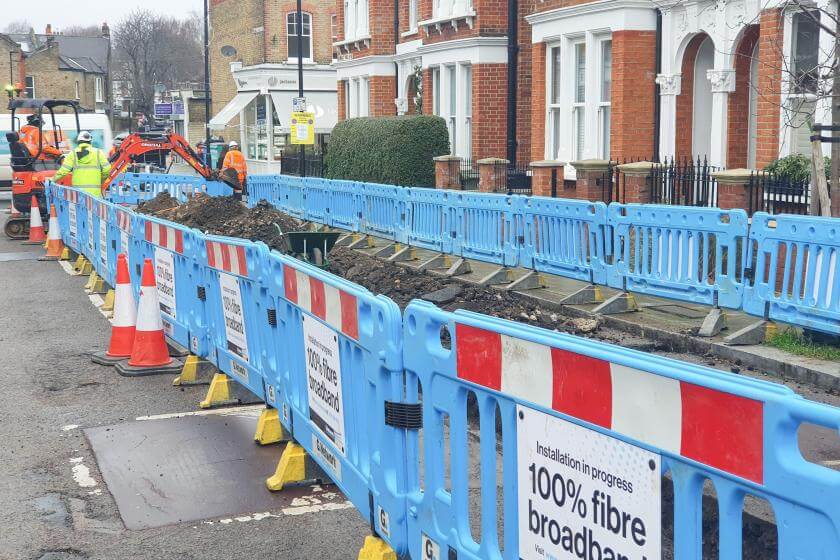
(Credit: Anna Watson / Alamy Stock Photo)
It is ISPs vs. local government with providers waiting for broadband permit approvals that can add costs and delays for enterprise network expansion.
The Broadband Equity and Access Deployment (BEAD) funding has been announced for all states. But the actual delivery of high-speed Internet access to all under the historic spending effort is facing a huge challenge in permitting that could slow rollouts to a crawl.
That is why telecom leaders are pressing Congress harder than ever to pass legislation that would remove regulatory hurdles at the local level and both streamline and lower the expense of broadband deployment.
A permitting bill arises but has fans and foes
The House Energy and Commerce Committee has passed a bill, the American Broadband Deployment Act of 2023, led by Republican representatives, which would put a 60-day time limit on local review procedures for broadband undertakings. It also says permitting applications would be approved after that deadline if the project has not been denied by the city or town.
Mayors from across the nation oppose the bill claiming it preempts their authority over the deployment of telecommunication infrastructure on local public property.
And although there’s opposition, a tsunami of permit requests for the nation’s largest ever broadband deployment ($42.5 billion in BEAD funding) will still hit those that review and process requests. Are the reviewers and processors properly staffed and prepared to ride the wave, or will it wash them away?
In related news, many parties are still waiting for a ruling from the Federal Communications Commission (FCC) on pole attachments which presents a pressing problem for the deployment of aerial fiber. It is an issue pitting ISPs against pole owners.
A patchwork of current permitting rules
After almost two years on the issue, those in the know are beginning to wonder if Congress equals progress, concerned that a patchwork of current rules for permitting will delay the time when the rubber of carrier contractors and construction crews finally hits the road to begin the BEAD project rollout.
In an expert opinion piece published in late June,Clearfield CEO and Minnesota Hall of Fame member Cheri Beranek summed up the permitting challenge. “Permits serve a purpose, but unchecked, they will become a barrier to closing the digital divide,” Beranek wrote. “Many of these permitting processes have gone unchecked for decades, but it has never been more urgent to unravel these complex permitting webs we have woven. We have gotten a record-setting federal investment to ensure everyone can access high-speed broadband. We should do everything in our power not to waste it.” Her company is advancing fiber deployment solutions to meet evolving needs.
Others with skin in the game are not saying whether they are for or against the HR bill, perhaps waiting for something better. That includes the Fiber Broadband Association (FBA), an industry trade group representing those interested in fiber first and foremost for providing broadband internet for all with BEAD. A representative for the FBA declined to comment on the bill.
Permitting process challenges are not a new problem, but a career opportunity
The BEAD-funded broadband rollout, like many service deployments includingwireless, fiber to the home (FTTH), 5G, and even device-based IoT offerings, face state and local permitting rules for trenching for fiber, attaching fiber to telephone poles, and building antennas for microwave towers. Localities continue to hope they can manage disruption to everyday operations of their cities and towns by taking time to review permit requests and associated expenses.
Perhaps no infrastructure provider knows that better than Crown Castle, which rents space on its 40,000 cell towers across the nation to service providers to help launch services such as 5G. Its network includes fiber optics, and the nearly 30-year-old corporation continues to be a destination for network operations staff, fiber splicers, and of course, permit process specialists.
In a featured posting, Crown Castle described the duties of the Permitting Specialist. Job duties include "the preparation and submittal of various entitlement applications, permits, and agreements to allow installation of communications facilities on Crown Castle poles, towers, fiber, and other infrastructure." The position requires knowledge of municipal processes, codes, and ordinances, as well as frequent interface with local governments and jurisdictions.
How we can fix the permitting process
Given the unprecedented amount of BEAD money allocated to finally deliver broadband internet to un- and underserved areas, it is time to bring sides together today to find a permitting process that can handle an anticipated sustained spike in the volume of requests for access.
A collaborative effort that includes localities and ISPs would go a long way toward that goal. Add in other common stakeholders, such as state and federal government agencies that are frequently part of the process, and overcoming a formidable challenge to broadband can be overcome.
Related articles:
What to Consider When Choosing a SASE Vendor
- Details
- Published on 25 July 2023
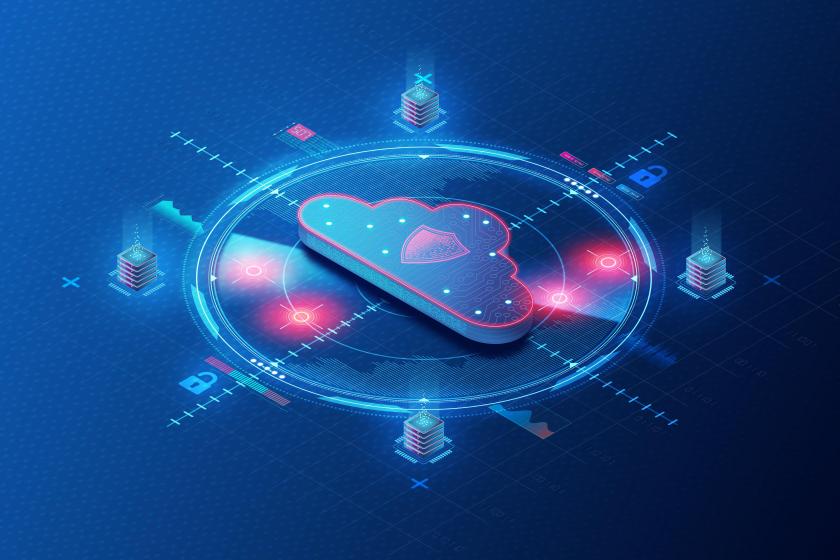
(Source: ArtemisDiana / Alamy Stock Photo)
SASE technology can be quite complex. There are a wide range of SASE vendors available. Find out what to consider when choosing the best SASE vendors.
Simply stated, Secure Access Service Edge (SASE) is a cloud architecture model that combines network and cloud-based security framework to provide secure access to network services from anywhere. A plethora of offerings are now available from SASE vendors.
Those offerings cover a wide range of technologies and service models. And the SASE vendors include many familiar companies who, in the past, have provided SD-WAN, networking security, and endpoint security solutions. Here is our guide to help you sort through those offerings and pick a SASE vendor that is right for your enterprise needs.
What’s accelerating SASE demand?
Demand for a cybersecurity architecture rose in part because of the explosion of office workers who shifted to work from home or hybrid plans as we move through the COVID years. Combine that shift with the $1.2 trillion Infrastructure Investment and Jobs Act of 2021, which committed $45 billion to provide broadband to all (sites), and you have a broadening sea of devices to support and applications to access. Climbing broadband access speeds are helping feed the fire.
Supporting work-from-home and work-from-anywhere approaches and new sites supercharges the need to provide secure remote access to data and applications. Add in the use of SaaS offerings, cloud services, and IoT devices, and SASE becomes an alluring solution, so researching the best SASE companies is critical.

Why knowing the right SASE features is important
One of the challenges those new to SASE technology often encounter is that solutions can be quite complex as they are made up of many discrete elements. One way to better understand what SASE is and what it does is to look at those elements.
The elements within most offerings and assembled solutions fit into two categories. There are WAN Edge Services and Security Service Edge (SSE) elements. Functionally, there are five main pillars of SASE. They are SD-WAN, firewall-as-a-service (FWaaS), secure web gateway (SWG), cloud access security broker (CASB), and zero trust network access (ZTNA).
Many SASE vendors don't yet have the full stack of features, and some partner with other companies to fill the gaps. There are traditional internet and WAN service providers who are now bundling endpoint security offerings with their WAN connectivity services. Another class of vendors is the remote access companies, like those that provide VPNs, edge routers, and more. Some are partnering with endpoint security vendors and WAN service providers to deliver SASE services. And finally, there are the traditional access security vendors. These are companies that offer firewalls, zero-trust access, and other offerings. Again, some of these vendors are now partnering with others to round out their offerings into a full SASE service.
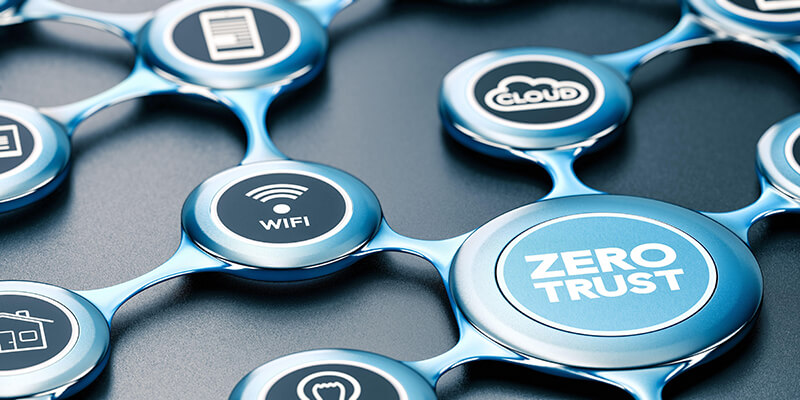
Top features to consider when choosing a SASE vendor?
The fast-growing list of SASE solution providers offers a wide variety of choices. Note that some on the list are familiar network security vendors who partner with SD-WAN providers to offer a SASE solution, while others are SD-WAN providers that bundle cloud-based security services into a SASE offering. You will find a mix of software vendors, networking hardware makers, service providers (telcos), as well as firms with roots in firewall offerings. Some have been evaluated as single-vendor SASE providers by the likes of Gartner Group, while others are part of a multi-vendor solution.
Here are some criteria to evaluate these SASE companies.
Network and security architecture
When evaluating which SASE solution best meets your organization’s specific networking and security needs, you need to ensure that flexibility is high on the list.
Organizations should look for a truly flexible SASE implementation that is integrated, one which will deliver a cloud-native infrastructure and offer cloud instances regardless of if the deployment is on public or hybrid clouds or on-premises, to any location and application type. Seek out a flexible SASE architecture that reduces the burden on your IT teams by simplifying the complexity of cloud or on-premises deployment while also delivering quality experiences to your end users.
Support
Whether you’re shopping for a single- or multi-vendor-SASE solution for your organization, you must make service and support a top priority. What you believe to be the best crafted SASE offering can successfully reduce risk and confidently accelerate your business in the cloud yet fall when it comes to support. Ask for customer references, service level agreements (SLA), and details on the provider's support organization, and ask for information on reactions to specific problem scenarios.
Should you select a multi-vendor SASE solution, engage the contributing companies to determine the strengths and weaknesses of their interrelation. Is it strong and smooth, or does it sound as if it's not much more than a generic vendor partnership program? Cross-training and certification of staff should be attainable and of high value to your organization.
Another consideration when opting for a multi-vendor solution is the role of SASE standards. For help here, look to the work of industry groups like MEF. A recent Network Computing article noted the issues enterprises face in this arena and how MEF is trying to address those issues. In that article, the author noted:
“…a fragmented vendor ecosystem and lack of common terminology leave enterprises challenged to compare SASE feature sets and solutions. The resulting confusion can lead to incomplete service offerings that don’t meet needs and expectations.”
To simplify and speed up the evaluation, implementation, and management of SASE services, MEF published the industry's first standard for SASE, which defines common terminology, attributes of the service, and a service framework, along with a Zero Trust framework. With these frameworks, enterprises can make choices based on industry-standard definitions allowing for easier evaluation and faster decision-making and implementation.
Application security
The practice of defending core business applications and crucial data at the network perimeter is dated and increasingly complicated to manage. That's especially the case with the advent of work-from-home and hybrid approaches, where IT groups must support a myriad of devices, greater mobility, and higher-speed internet connections.
As a result, standard hardware-based security equipment used by network administrators is no longer sufficient to protect remote network access to applications. SASE provides unified policy management based on user identity, enabling your company to deploy security services no matter where its users or corporate resources are located.
Data protection solutions
Another benefit of a robust SASE implementation is the ability for IT to safeguard growing volumes of applications, systems, and data by setting an array of policies for their access.
Some of the capabilities and protections to look for in a SASE implementation include the following:
- Secure web gateway, which protects users from web-based threats while applying and enforcing corporate acceptable use policies.
- Cloud-access Security Broker (CASB), which is an on-premises or cloud-based security policy enforcement point between cloud service users and providers.
- Encryption, which encodes data so that it remains hidden from or inaccessible to unauthorized users.
- Firewall, which keeps out unauthorized traffic and only lets in communications that are deemed safe, using a set of security rules.
- Virtual Private Network (VPN), which brings privacy to communications over a public or untrusted data network.
Many SASE vendors support all these capabilities. Some do not.
Zero trust network access
Heralded by many as the next era of network access, Zero Trust Network Access (ZTNA) now offers organizations key new features, such as the ability to maintain least-privileged access and operate with the “allow-and-ignore” model.
ZTNA 2.0 provides secure connections to deliver better security outcomes for businesses with hybrid workforces, overcoming the limitations of ZTNA 1.0 solutions. Request vendors compare the versions.
Ask potential SASE solution providers if they support ZTNA 2.0 and how it addresses the limitations of version 1.0 with least-privileged access, continuous trust verification, and security inspection, plus protection for all apps and data.
Network deployment
There are options for your organization when it comes to network deployment of SASE, which currently include single vendor approaches, multi-vendor packages, the DIY option, and a managed services provider (MSP) alternative. The desired result is a deployment that converges networking and security functions into a single, unified platform that can be managed using a single pane of glass if needed.
Enterprise business and technology leaders should consider using a customer-centric approach that uses fewer vendors and simplifies operations, cuts complexity, and results in lower costs. However, since organizations have differing requirements, they need to address them with their SASE approach.
Application coverage
SASE combines networking and security functions in the cloud to deliver secure access to applications anywhere users work. Organizations should check to ensure that adopting ZTNA by verifying the identity of users and the health of their devices provides secure access to applications and application suites on a per-session basis, whether they are basic packages or enterprise-wide lifeblood systems.
Also, make your business more agile by leveraging the cloud to remove complexity from your infrastructure and provide immediate scalability. With open APIs in both networking and security, it's easy to choose what works best by integrating easily into preferred products or a broad and open single-vendor ecosystem.
Network optimization
Network optimization is a far-reaching and much-sought feature of SASE solutions. Pressing vendors for detailed use cases should shed light on how its attained. Though results will clearly vary by implementation, SASE should lighten Its load since it does not require deploying MPLS circuitry or special network infrastructure. It is pitched as being able to use broadband networks and leverage investments in current private network links.
SASE solutions are supposed to integrate with backbone networks and popular edge services, including content delivery networks (CDN), Cloud Access Security Broker (CASB), VPNs, and edge networks.
Reduced complexity is a top priority with SASE. You can simplify your IT infrastructure by minimizing the number of security products your IT team has to manage, update, and maintain, consolidating your security stack into a cloud-based network security service model.
Security compliance
The overarching goal here with a SASE solution is to configure security to detect and stop threats while maintaining compliance. What’s needed is contextual visibility into what is happening in a SASE session or connection.
To that end, organizations need insight into all cloud entities and knowledge of how the relationships among them affect their security posture. Once you know what you have, where it is, and how secure it is, you can enforce customizable governance policies that keep your cloud compliant with internal and external standards.
Threat prevention
Organizations evaluating SASE companies should be certain to seek threat protection in vendor solutions, given the soaring number and sophistication of unauthorized attempts on their data and other resources.
Probe vendors to determine if their SASE packages provide integrated full content inspection, as your firm will benefit from more security and visibility into your network. Systems need to identify false positives attempts.
Ask SASE vendors what tools their systems offer to help your security staff resolve alerts – and quicker. A recent report claimed security teams take an average of 6 days to resolve alerts.
SSL connection and DNS
SSL is best described as a standard technology for securing an internet connection by encrypting data sent between a website and a browser. Specifically, the SASE solution's Secure Web Gateway (SWG) inspects the web activity of end-users and applies a consistent set of security policies to enforce safe browsing habits at the endpoint. A robust gateway's features include deep SSL inspections, DLP, URL filtering, and DNS filtering.

SASE vendor selection key takeaways
The shift to SASE is already underway, as most SASE vendors supporting the cybersecurity architecture have already posted use cases on their websites explaining how household name organizations have embraced it to improve the way they do business without fear of security breaches we read about weekly.
A complete SASE implementation can simultaneously enable IT leaders to embrace fundamental changes in the way companies support workers, a precious asset that needs to be safely turned loose to maximize productivity and power corporate business advances.
As SASE evolves, stay smart and stay current with crucial coverage, advice, tips, and primers about SASE vendor offerings and standards from industry experts.
Fixed Wireless Access: An Enterprise Broadband Alternative
- Details
- Published on 12 July 2023
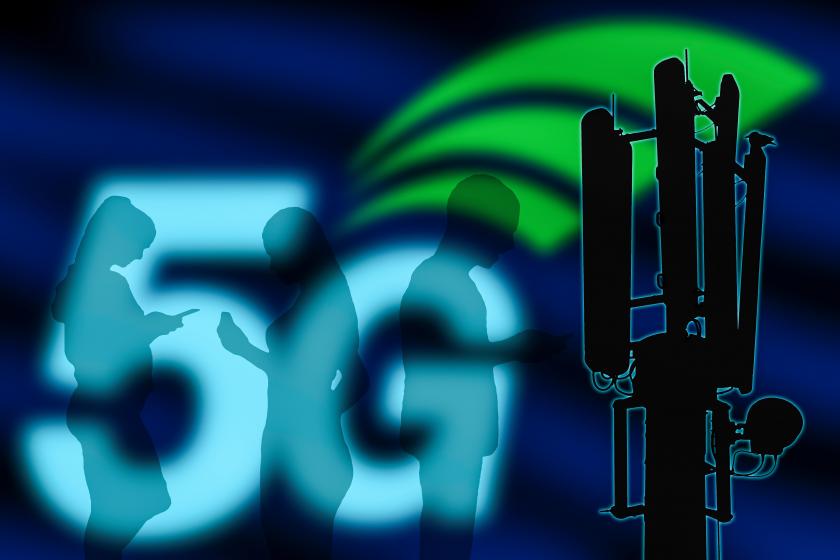
(Source: Geoff Smith / Alamy Stock Photo)
Depending on availability, fixed wireless access could deliver the bandwidth IT managers need to connect far-flung workers and remote sites.
Although living in the shadow of fiber as an alternative to broadband for all, fixed wireless access (FWA) has a bright present and future as means to expand corporate networks to home workers, small businesses, and rural locations.
Enterprise IT planners can expect to see an expansion of FWA availability as the result of an ongoing effort by the FCC to use the 42-42.2 GHz spectrum for sharing among small businesses and small wireless internet services providers (WISP). Bringing millimeter wave services such as 5G could be a boon for value-conscious high-speed broadband seekers.
The focus to date has been on fiber-based carrier deployments as they provide higher-speed services and can easily scale upward. Fixed wireless access point-to-multipoint systems can be upgraded but have fallen short of fiber-delivered speeds.
What’s the value of fixed wireless access?
In a challenging economy punctuated by inflation and higher prices for most everything, it's little surprise that the business case for or against fixed wireless access comes down to cost and ROI. The fastest option can give way to a slower alternative that’s better value.
T-Mobile and Verizon have seen big first quarters by bundling 5G FWA (Internet) with wireless calling plans, an emerging trend that will continue as states add carriers are at the beginning when it comes to actual fiber deployments based on the $48 billion Broadband Equity, Access, and Deployment program (BEAD) included in the Infrastructure Investment and Jobs Act.
5G fixed wireless access gains momentum
5G FWA has been the focus lately, with T-Mobile and Verizon each adding hundreds of thousands of new subscribers each quarter and stealing away existing cable and DSL subscribers.
Commenting on broadband delivery options and priorities for using BEAD funding, Jeff Heynen, Vice President, Broadband Access and Home Networking at Dell’Oro Group, said, “All this Federal money is about getting people connected, not just getting them fiber.”
They are doing so by offering consumers a low rate, no contract, and discounts on bundles with cell phone plans, explained Jeff Heynen. “The success of these services, which offer decent, but certainly not fiber-like speeds, is proof that speed isn’t everything. In fact, with inflation and prices still high, value is a crucial factor in how people select their broadband service.”
Fixed wireless access overcomes broadband services challenges
Fixed wireless access, which is available to support sub 5G speeds, holds a large edge on fiber when it comes to installation. Trenching for fiber is a time, labor-intensive and expensive undertaking, especially in un- and underserved, often rural areas. Mountainous areas and regions where the ground is frozen several months a year are also major challenges. Hanging fiber over telephone poles requires local approvals that slow deployment but is far less disruptive than trenching roads.
In contrast, adding gear to current towers and adding new ones is less resource-draining. FWA does require line-of-sight between signal origination and devices at the location to be connected.
Additionally, a wide-sweeping education and staff skills shortage widely acknowledged by the Fiber Broadband Association (FBA) industry trade association and fiber industry companies portends to slow the rollout of broadband, which requires significant labor for trenching, splicing, and other routine deployment tasks that FWA deployment largely avoids.
What about WISPs?
Fixed wireless internet service providers (WISPs) deliver broadband to customers in fixed locations such as residences, businesses, and schools. They focus on serving the hard-to-reach, unserved areas of rural America, as well as bringing affordable alternatives to underserved urban customers.
There are over 2,800 providers serving more than 7 million customers in 50 states. WISPs are small organizations with an average of under ten employees apiece and 1,200 customers, according to the Wireless Internet Service Providers Association (WISPA). Typical download speeds are 25 to 100 Mbps for residential and up to 1 Gbps for businesses.
Most WISPs are small and medium-sized businesses that have built their networks with private capital and are profitable and sustainable without government subsidies, according to the association. They employ local staff.
Beyond the recently outlined FCC plan, WISPs, small carriers, and rural groups will be able to access through sharing the 14 to 14.2 GHz band, which will help them compete with incumbent providers to serve small businesses, which make up over 95% of all U.S. businesses.
Furthermore, equipment vendors such as Tarana Wireless, which has raised $376 million in funding, are targeting WISPs and small players with their evolving FWA offerings. The company’s solution is interesting in that it can use both unlicensed sub-6GHz spectrum as well as licensed CBRS spectrum, according to Dell’Oro’s Heynen. “CBRS spectrum is going to be critical for WISPs seeking BEAD funds as they must have licensed spectrum to qualify. “ In addition, installing robust outdoor routers will help overcome the building materials challenges. FWA providers will have to offer alternative solutions where users can see similar speed and performance – without the limitations of 5G millimeter wave issues.
Furthermore, fixed wireless access addresses a common 5G limitation. Early on, FWA systems using 5G were limited as the millimeter wave spectrum used had difficulty penetrating building materials such as metal and certain types of glass. Over time, a feature called beamforming was applied to address this challenge by forming the signal into a tightly focused beam.
A final word about fixed wireless access
All the talk about deploying fiber first, foremost, and fully will likely give way to an end result that includes optical and fixed wireless systems in the absence of carrier overbuilding. Value (less cost per connection as well as the ability to bundle mobile services) and availability are probably the two biggest advantages FWA offers IT managers, Heynen said.
Related articles:
FCC Explores 42 GHz Spectrum Band Sharing for Small Businesses
- Details
- Published on 05 July 2023
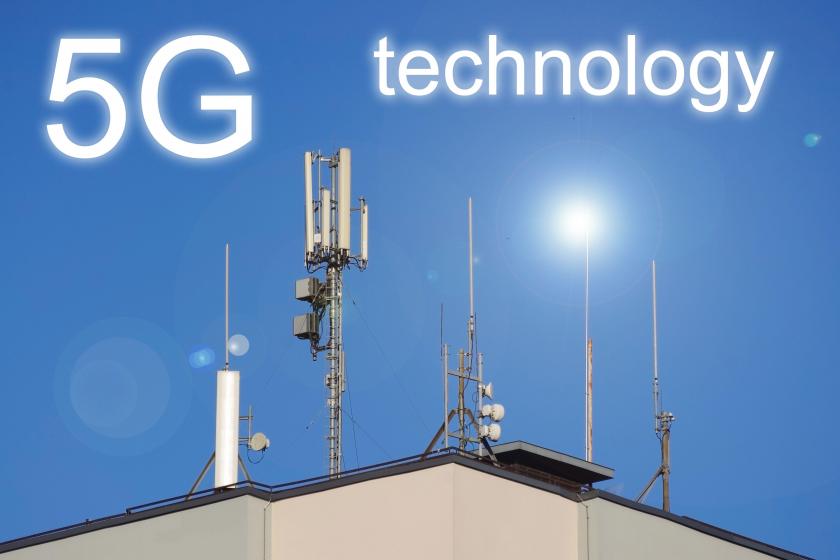
(Source: Audrius Merfeldas / Alamy Stock Photo)
42 GHz spectrum band sharing for Fixed and Mobile Millimeter Wave services potentially could benefit small businesses and service providers.
The U.S. Federal Communications Commission (FCC) met yesterday with industry members to consider ways to open spectrum in the 42 GHz band that would provide small businesses and service providers access through spectrum band sharing on a traditional licensed and unlicensed basis.
Opening up this spectrum could have far-reaching implications as 99% of all businesses in the U.S. fit the Small Business Administration's criteria of businesses with fewer than 500 workers. Municipalities and non-profit organizations could potentially benefit from a change in the way this spectrum is used.
The item also seeks comments on how “potential sharing and licensing regimes might lower barriers to entry for smaller or emerging wireless service providers, encourage competition, and prevent spectrum warehousing,” according to the FCC.
The several spectrum access mechanisms considered by the agency and a wide variety of commenters on the notice of proposed rulemaking (NPRM) are intended to pave the way for the high-band spectrum to be used more broadly and efficiently for millimeter services, such as 5G fixed wireless access (FWA).
The NPRM is intended to outline the potential benefits of implementing a spectrum band shared licensing approach in the 42-42.5 GHz band specifically and seeks comment on any other benefits or drawbacks of such an approach as compared to either a traditional exclusive use licensed or unlicensed model.
The FCC proposes to license the 42 GHz band as five 100 megahertz channels.
Three spectrum band sharing approaches offered
The FCC has solicited comments on three specific shared licensing approaches (and on any other shared licensing models proposed by commenters):
- A nationwide non-exclusive licensing approach, in which licensees would apply for such a license with the Commission and then coordinate and register specific deployment sites with a third-party database.
- A site-based licensing approach, in which licensees would apply for each deployment site directly with the Commission.
- A technology-based sensing approach, in which operators would employ certain technologies to avoid harmful interference from one another without the use of a registration database.
The list of commenters on the NPRM reads like a who’s who of the wireless industry, including AT&T, the CTIA, Ericsson, Cisco, Nokia, Qualcomm, Samsung, T-Mobile, US Cellular, the Telecommunications Industry Association (TIA), the Competitive Carriers Association, the National Academy of Sciences, and SES Americom.
Other carriers have already spent big in the third millimeter wave 5G spectrum auction, concluded in early 2020, which saw T-Mobile, DISH, and Sprint come away with almost all of the 47 GHz spectrum. The trio is licensed to provide service to roughly 95%of the U.S. population.
Proposed spectrum band sharing
The 42-42.5 GHz band is largely but not totally unused. The NPRM proposes measures to protect radioastronomy services in the adjacent 42.5-43.5 GHz band. Citizens Broadband Radio Service (CBRS) is a shared wireless spectrum in the 3.5GHz band that has helped in building private LTE networks and extending public 4G and 5G services. The frequency band space was auctioned to all comers – including enterprises – in July 2020 and brought in $4.6 billion. A novel spectrum access system was created to manage the CBRS band, which means eliminating interference with license holders.
Benefits expanding for millimeter wave bands
Millimeter wave bands were widely embraced for – but somewhat limited to – high-speed, short-distance services such as 5G FWA, which T-Mobile and Verizon have rapidly deployed. This initially left mobile applications on the outside looking in because of propagation losses at such high frequencies and the inability of millimeter wave signals to propagate around obstacles.
Ericsson and Qualcomm claimed success in 2020 for extending the distance of these waves.
It’s now believed that some of the presumed disadvantages can be turned into advantages, according to the FCC. For example, short transmission paths and high propagation losses can facilitate spectrum re-use in microcellular deployments by limiting the amount of interference between adjacent cells. Furthermore, the FCC explained, where longer paths are desired, the extremely short wavelengths of millimeter wave signals make it feasible for very small antennas to concentrate signals into highly focused beams with enough gain to overcome propagation losses.
The agency added that short wavelengths of millimeter wave signals also “make it possible to build multi-element, dynamic beam-forming antennas that will be small enough to fit into handsets—a feat that might never be possible at the lower, longer-wavelength frequencies below 6 GHz where cell phones operate today.”
Related articles:
